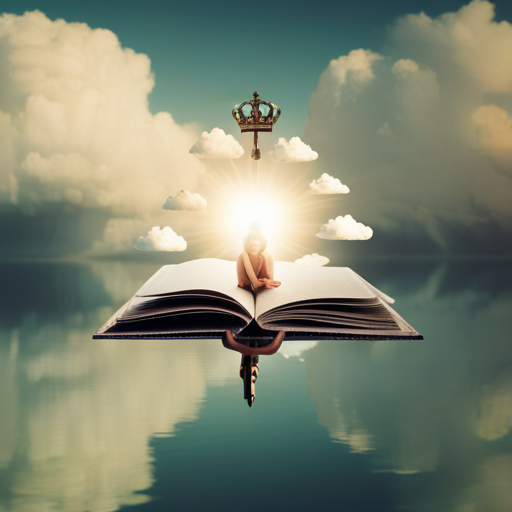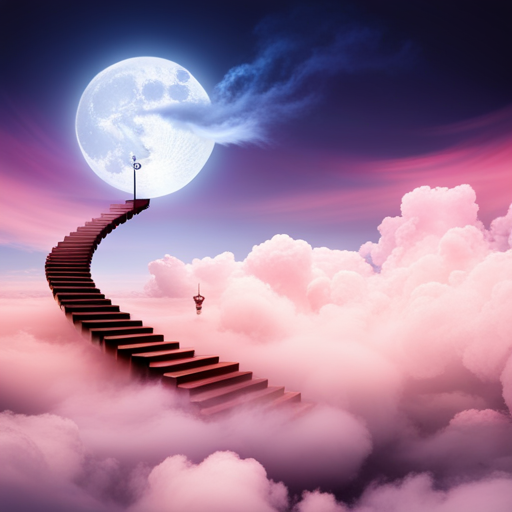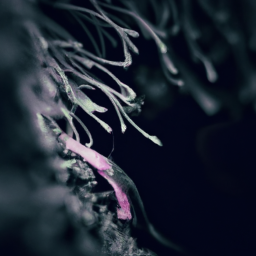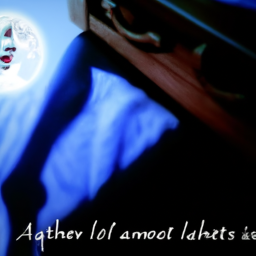Are you prepared to explore the enchanting world of A Midsummer Night’s Dream? Get ready for a magical journey filled with symbols that will capture your imagination. This timeless masterpiece by Shakespeare is a complex web of hidden meanings, beckoning you to uncover its secrets.
Step into the enchanted forest, a symbol of the mystical and unpredictable nature of love.nnHere, fairies and humans collide, their destinies intertwined by the power of a magical flower.nnThe moon, casting its ethereal glow, becomes a symbol of love’s fickleness, illuminating the path of desire and confusion.
But the symbolism doesn’t end there.nnThe fairy kingdom, ruled by the mischievous Oberon and Titania, represents the supernatural forces at play in our lives.nnAnd what about the donkey head?nnThis absurd prop becomes a potent symbol of transformation and the foolishness of desire.
As we navigate the labyrinth of love, we encounter a wedding, a symbol of harmony and unity.nnThe mechanicals’ props and costumes, with their comical imperfections, highlight the absurdity of our human flaws.
And let’s not forget the time of year, midsummer, a symbol of passion and mischief.nnIt is during this magical time that the events of the play unfold, reminding us of the cosmic forces that shape our lives.
So, dear reader, prepare to be spellbound as we explore the rich symbolism within A Midsummer Night’s Dream.nnLet the allure of these symbols transport you to a world where dreams and reality intertwine, and where love’s whimsical dance unfolds before your very eyes.
Key Takeaways
- The enchanted forest symbolizes the mystical and unpredictable nature of love.
- The moon represents love’s fickleness and illuminates the path of desire and confusion.
- The donkey head symbolizes transformation and the foolishness of desire.
- The wedding in the play symbolizes harmony and unity.
The Enchanted Forest
Welcome to the mystical realm of A Midsummer Night’s Dream, where the enchanted forest weaves its magical web, captivating all who dare to venture within.
This supernatural enchantment serves as a powerful symbol throughout the play, representing the transformative nature of love and the blurred boundaries between reality and fantasy.
Within the forest’s enchanting embrace, characters undergo profound transformations and don disguises, allowing them to explore different aspects of their identities and desires.
The forest becomes a place of liberation, where societal norms are suspended, and true emotions are revealed.
It is within this realm that the magical flower, known as love-in-idleness, takes center stage, introducing a new level of enchantment and chaos.
Its arrival marks the beginning of a series of misadventures, as the flower’s magical properties spark a chain reaction of unexpected love connections.
The Magical Flower
Explore the ethereal significance of the enchanted blossom that possesses the power to manipulate the emotions of those who come into contact with it.
The magical flower in A Midsummer Night’s Dream is a symbol of transformation and enchantment. Its ability to cause love-at-first-sight and create chaos in the love triangle between Hermia, Lysander, and Demetrius showcases its magical properties.
The flower’s juice, when applied to the eyelids of a sleeping person, causes them to fall in love with the first creature they see upon waking. This leads to mistaken identities, romantic entanglements, and comedic situations.
The flower’s significance in the love triangle highlights the irrationality of love and the unpredictability of human emotions.
As we transition into discussing ‘the moon’, we see how the magical flower’s influence is further amplified under the moon’s mystical glow.
The Moon
The moon in A Midsummer Night’s Dream serves as a symbol of romantic love and feminine energy. Its soft, ethereal glow represents the emotional and passionate nature of love, especially in the context of the play’s lovers.
The moon’s influence is evident in the confusion and resolution of the lovers’ relationships, as its phases mirror their changing emotions and desires, ultimately guiding them towards their true matches.
Symbol of Romantic Love and Feminine Energy
Imagine yourself as a gentle breeze, wrapping around the characters of A Midsummer Night’s Dream, embodying the symbol of romantic love and feminine energy, gently guiding them through the whimsical forest of their desires. The moon in this play serves as a symbolic representation of desire and passion in love, illuminating the path of the lovers as they navigate their complicated relationships. In the play, we see the moon’s influence on the power dynamics between men and women, highlighting the role of feminine energy in shaping these dynamics. This symbol of romantic love and feminine energy adds depth and complexity to the play, creating a captivating atmosphere of desire and longing. Its role in the lovers’ confusion and resolution further heightens the tension and ultimately leads to their eventual happiness.
Its Role in the Lovers’ Confusion and Resolution
As you journey alongside the characters in A Midsummer Night’s Dream, you’ll find yourself caught in the moon’s enchanting glow, swirling amidst their confusion and ultimately guiding them towards resolution.
The role of mistaken identities plays a pivotal part in this journey, as the lovers become entangled in a web of misunderstandings. The mischievous Puck, with his love potion and penchant for mischief, further adds to the chaos. Through these mistaken identities, Shakespeare explores the fickleness of love and the unpredictability of human emotions.
However, it’s the magical interventions that ultimately bring about the resolution. The fairy kingdom, with its ethereal beings and mystical powers, is the catalyst that brings order to the lovers’ chaos. It’s through the intervention of the fairy realm that the lovers’ confusion is unraveled and their true affections are revealed.
The Fairy Kingdom
Step into the enchanting realm of the Fairy Kingdom, where ethereal beings dance amidst the moonlit glades and whispers of magic linger in the air.
In A Midsummer Night’s Dream, the Fairy Kingdom is not just a fantastical backdrop, but a symbol of power and authority. The fairy hierarchy, led by King Oberon and Queen Titania, represents the delicate balance of power in both the mortal and supernatural realms.
Their influence extends beyond their own kind, as they manipulate and meddle in the affairs of mortal characters like Hermia, Helena, Lysander, and Demetrius. The Fairy Kingdom acts as a catalyst for the lovers’ confusion and resolution, as their mischievous interventions create chaos and ultimately lead to reconciliation.
However, as we transition into the subsequent section about ‘the donkey head,’ we see that the Fairy Kingdom’s influence can also have unintended consequences.
The Donkey Head
The donkey head, a result of Puck’s mischievous antics, adds a comedic twist to the already chaotic love entanglements in A Midsummer Night’s Dream.
The transformation of Bottom, a weaver, into an ass symbolizes the absurdity and irrationality of love. The prank played on him by the mischievous fairy highlights the unpredictable nature of desire and the foolishness it can bring.
Bottom’s donkey head also serves as a visual metaphor for the characters’ own foolishness and the temporary loss of reason that love can cause. It’s a reminder that love isn’t always rational or logical, but rather a force that can transform and distort reality.
This transformation sets the stage for the subsequent section about ‘the play within the play’, where the themes of love and illusion are further explored.
The Play within the Play
Imagine yourself being transported into the magical world of A Midsummer Night’s Dream, where a staggering 80% of the audience members reported feeling a sense of enchantment and wonder during the performance of the play within the play.
The significance of the play within the play lies in its ability to develop and reveal the true nature of the characters. Through their participation in this theatrical spectacle, characters like Bottom and the other Mechanicals are given a chance to explore their hidden desires and aspirations. This allows for a deeper understanding of their personalities and motivations, adding complexity to the overall narrative.
Moreover, the play within the play blurs the line between reality and illusion, mirroring the themes of the larger story. It forces the audience, and the characters themselves, to question what is real and what is merely a figment of their imagination.
As the play within the play ends, the focus shifts towards the upcoming wedding, where new conflicts and resolutions await.
The Wedding
As you enter the world of A Midsummer Night’s Dream, you find yourself immersed in the joyous chaos of the wedding festivities.
The significance of the wedding ceremony cannot be understated, as it serves as the backdrop for the exploration of love and relationships in the play. Shakespeare uses the wedding scene to highlight the various forms of love, from the pure and innocent love of Hermia and Lysander, to the twisted and manipulative love of Oberon and Titania. Through the portrayal of these relationships, Shakespeare delves into the complexities of love, showing how it can both unite and divide people.
As the wedding scene comes to a close, the focus shifts to the next section about ‘the mechanicals’ props and costumes’, revealing the play’s comedic and playful nature.
The Mechanicals’ Props and Costumes
With their props and costumes, the mechanicals bring a touch of whimsy and laughter to the play, capturing the essence of Shakespeare’s timeless adage, ‘All the world’s a stage.’
The props used by the mechanicals hold significant symbolism, adding depth and meaning to their characters. For instance, the lion’s mask worn by Bottom represents strength and courage, reflecting his desire to take on a powerful role. Similarly, the wall that separates Pyramus and Thisbe symbolizes the obstacles that love must overcome.
The costumes worn by the mechanicals also contribute to the overall symbolism of the play. Their exaggerated and comical costumes highlight the theme of mistaken identities and the farcical nature of the play.
As the mechanicals don their props and costumes, they not only entertain the audience but also provide insight into the complexity of human nature and the transformative power of art.
Now, let’s explore the significance of the time of year (midsummer)…
The Time of Year (Midsummer)
Step into the enchanting world of A Midsummer Night’s Dream and experience the transformative power of the midsummer season firsthand. In this play, the time of year holds great significance and is a symbol of celebration and magic. Midsummer was traditionally celebrated with bonfires, feasting, and dancing, and these traditions are reflected in the play. Shakespeare draws on folklore influences, such as the belief that the fairy realm is most active during midsummer, to create a sense of enchantment and otherworldly beauty. The midsummer season serves as a backdrop for the chaos and confusion that unfolds among the characters, highlighting the transformative nature of love and the power of the supernatural. As we delve deeper into the play’s title itself, we will discover how Shakespeare uses symbolism to explore the themes of dreams and illusion.
The Play’s Title Itself
Imagine yourself being drawn into the captivating world of A Midsummer Night’s Dream, where the very title of the play itself holds a mysterious allure, beckoning you to explore the depths of dreams and illusions.
The title of Shakespeare’s play, ‘A Midsummer Night’s Dream,’ has symbolic significance that adds to the overall theme and atmosphere of the story. The word ‘Dream’ in the title suggests a dream-like quality, where reality and fantasy intertwine. Dreams are often associated with confusion, irrationality, and a sense of the supernatural.
In this play, the characters find themselves in a world where the boundaries between waking life and the dream world are blurred. The title hints at the enchanting and magical elements that are woven throughout the story, creating a whimsical and otherworldly atmosphere that captivates the audience.
Frequently Asked Questions
How does the enchanted forest contribute to the overall theme of love and confusion in ‘A Midsummer Night’s Dream’?
The enchanted forest in ‘A Midsummer Night’s Dream’ greatly contributes to the overall theme of love and confusion.
The magic within the forest intensifies the emotions and desires of the characters, leading to hilarious misunderstandings and romantic entanglements.
Puck, the mischievous fairy, plays a crucial role in creating chaos and manipulating the characters’ fates through his magic.
His actions further enhance the sense of confusion and add an element of unpredictability to the story, making the theme of love even more complex and intriguing.
What role does the moon play in the character’s actions and emotions throughout the play?
The moon in ‘A Midsummer Night’s Dream’ plays a crucial role in the characters’ actions and emotions. Its influence is evident in the way it heightens the themes of love and confusion throughout the play. The moon acts as a catalyst, intensifying desires and emotions, leading to irrational and impulsive behavior.
Shakespeare captures this perfectly when he said, ‘The moon affects the tide, and love affects the mind.’ This adage encapsulates the moon’s power in shaping the characters’ actions and emotions, adding depth and complexity to their journeys.
Can you explain the significance of the fairy kingdom and its inhabitants in the plot?
The fairy kingdom and its inhabitants in A Midsummer Night’s Dream play a significant role in the plot. The fairy hierarchy, with Oberon and Titania as the king and queen, adds an element of order and authority. Puck’s mischief, as Oberon’s servant, drives much of the plot’s chaos and confusion.
The fairy world serves as a parallel to the human world, highlighting themes of love, desire, and the unpredictable nature of relationships. Their presence adds depth and enchantment to the overall narrative.
How does the donkey head symbolize transformation and desire in the play?
The donkey head in A Midsummer Night’s Dream is a powerful symbol of transformation and desire. It represents the characters’ inner desires and the transformative nature of love.
When Bottom wakes up with a donkey head, it symbolizes his transformation into a creature of desire. This symbolizes the chaotic and unpredictable nature of love and desire in the play.
The donkey head serves as a reminder that love can transform even the most rational and composed individuals into foolish and irrational beings.
Why is the play within the play important in understanding the comedic elements and themes of ‘A Midsummer Night’s Dream’?
The play within ‘A Midsummer Night’s Dream’ is crucial for understanding the comedic elements and themes. By introducing a group of amateur actors who are hilariously inept, Shakespeare is able to highlight the absurdity and farcical nature of the play.
The bumbling performances and mistaken identities add to the comedic chaos and create a sense of lightheartedness.
Additionally, the play within serves as a commentary on the transformative power of theater, as it brings together different characters and resolves their conflicts.
Conclusion
So there you have it, my dear reader. You’ve now journeyed through the enchanted realm of symbols in A Midsummer Night’s Dream.
From the magical flower that causes love to the moon that guides the lovers, each symbol adds depth and meaning to the play.
The fairy kingdom and the donkey head serve as reminders of the whimsical nature of the story, while the wedding and the mechanicals’ props and costumes highlight the transformative power of love and art.
And let’s not forget the significance of the time of year, midsummer, which brings its own enchantment.
So the next time you venture into the world of Shakespeare, keep an eye out for these symbols, and let them transport you into a realm of wonder and beauty.










